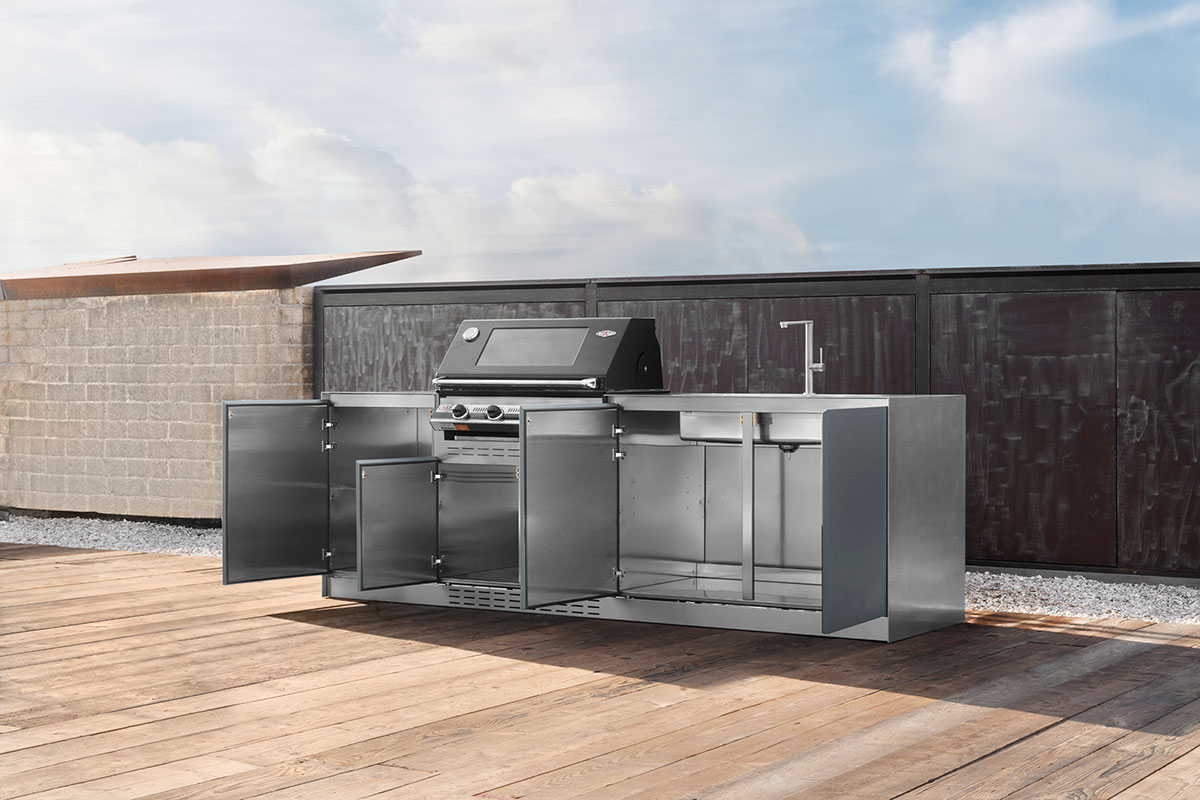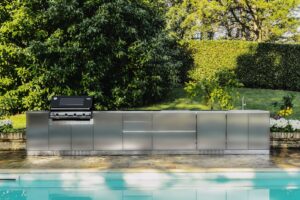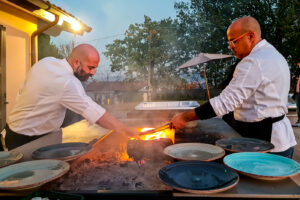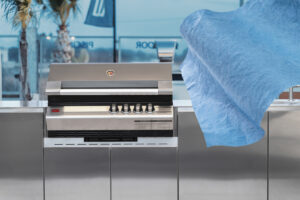Designing an outdoor kitchen is now widely known as an investment that can completely transform and make an outdoor space—big or small—exceptionally functional, practical, and durable. However, to achieve this, it is essential to avoid making the five common mistakes we will analyze in this article: underestimating the durability of materials, ignoring weather protection, not considering the layout of elements, choosing the wrong appliances, and neglecting maintenance and cleaning.
The 5 Mistakes to Avoid When Buying an Outdoor Kitchen
When purchasing an outdoor kitchen, and even earlier, during the planning phase of your outdoor space, there are numerous factors to consider to avoid making irreversible mistakes. However, these mainly revolve around five common missteps.
1. Underestimating the Durability of Materials
Rain, sun, wind, and temperature fluctuations can quickly deteriorate surfaces and structures made from weak materials. To prevent this, it is advisable to:
- Prefer stainless steel (AISI 304 or 316) for structures and appliances, as it is highly resistant to corrosion.
- Use natural stone, concrete, or porcelain stoneware for countertops, avoiding untreated wood or laminates that may swell due to humidity.
- Ensure that any chosen wood is treated for outdoor use, such as teak.
2. Ignoring Weather Protection
Exposing the kitchen to the elements without any cover can drastically reduce its lifespan and require costly maintenance. To avoid this, simply:
- Install a cover (gazebo, pergola, or canopy) to protect the outdoor kitchen from sun and rain.
- Use waterproof covers when the outdoor kitchen is fully exposed to the elements and not in use.
- Ensure adjustable feet and proper drainage to prevent water pooling under the furniture.
3. Not Considering the Layout of Elements
A poorly designed outdoor kitchen can be impractical, with inconvenient or cramped spaces that make cooking and movement difficult. Therefore, it is essential to:
- Plan distinct areas for cooking, preparation, and serving with appropriate distances.
- Leave at least 90 cm of free space in front of work surfaces to allow easy movement.
- Position the barbecue and cooktop in a well-ventilated area, away from flammable materials.
- Consider the kitchen’s placement in relation to the dining table, avoiding excessive distances that could make serving inconvenient.
4. Choosing the Wrong Appliances
Selecting appliances that are not designed (or adequately protected) to withstand the elements can lead to early malfunctions and safety issues. It is therefore crucial to:
- Purchase stainless steel appliances certified for outdoor use or appropriately sized to fit into waterproof enclosures.
- Ensure that electrical outlets and connections are waterproof and certified for outdoor use.
5. Neglecting Maintenance and Cleaning
To keep an outdoor kitchen in perfect condition, it is essential to:
- Choose smooth, easy-to-clean surfaces, avoiding porous materials that could absorb stains and grease.
- Install cabinets with sealed doors and drawers to prevent dust, insects, and leaves from entering.
- Regularly clean all components using appropriate products.
Avoiding these five mistakes is the key to having a functional, durable, and enjoyable outdoor kitchen. Choosing the right materials, protecting the structure from the elements, organizing spaces intelligently, selecting suitable appliances, and planning for easy maintenance are the fundamental steps for a long-term investment.






